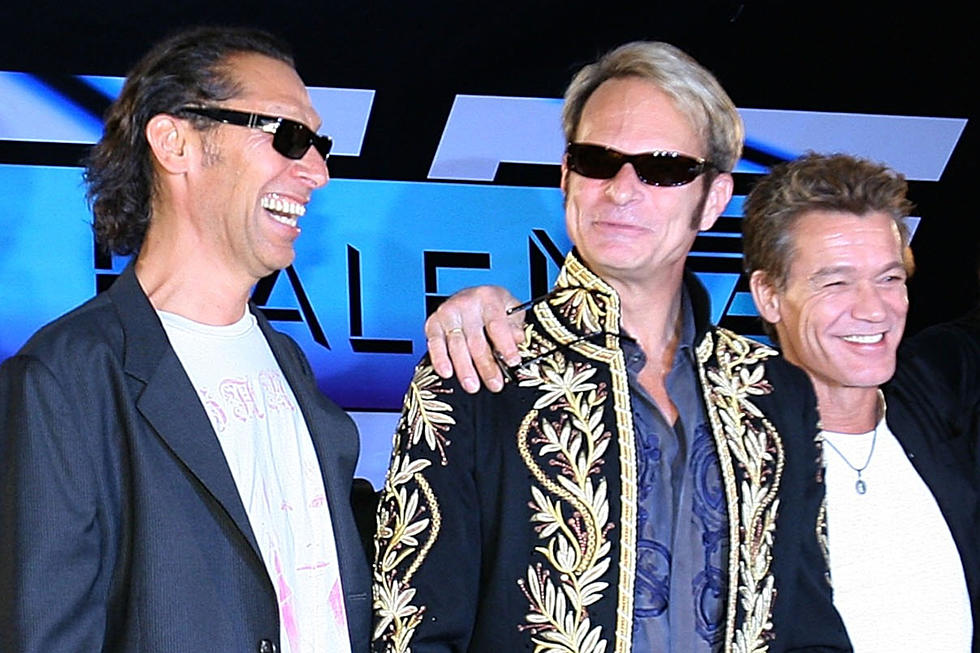
Why David Lee Roth’s ‘Skyscraper’ Divided So Many Fans
The spring and summer of 1986 bore witness to one of the most hostile public airings of dirty laundry in rock 'n' roll history, courtesy of Van Halen and their recently departed singer David Lee Roth, whom they had of course recently replaced with successful solo artist Sammy Hagar.
Both entities – "Van Hagar" and the hastily assembled DLR band – released competing albums just a few months apart that year. And, to the surprise of many fans, it was Roth's wrecking-crew like ensemble (composed of guitarist Steve Vai, bassist Billy Sheehan, and drummer Gregg Bissonette) that came off sounding more similar to vintage Van Halen.
Nevertheless, Van Halen's significantly more mainstream, keyboard-laden 5150, handily outsold the DLR band's somewhat schizophrenic (but just as frequently thrilling) Eat 'Em and Smile three-to-one, thereby shuffling the cards in the deck before they were dealt for round two of the ongoing feud, to be enacted in the early months of 1988.
The DLR band struck first, delivering Skyscraper on Jan. 26, 1988. But with it came news that bass player Sheehan had already bailed out (replaced by Matt Bissonette, brother of Gregg) amid much mysterious frustration relating to the LP's difficult recording process – the first sign that there could be trouble in paradise.
First single "Just Like Paradise" shot up the radio and MTV charts, buoyed by a virtual tsunami of orchestrated synthesizers deployed by new band member Brett Tuggle. Yet the song simultaneously alienated all of the die-hard Van Halen-heads who had thrown their lot in with Roth. Their frustration was not eased by the consistent keyboard abuse heard on subsequent singles, the poppy "Stand Up" or a just plain-weird title cut that felt like a glimpse of what psychedelia might sound like on herbal tea instead of acid.
Even when they took precedence over keyboards, the guitars on promising hard rockers such as "Knucklebones" and "Perfect Timing" had to struggle against a compressed and unyielding tone that robbed them of the first album's excitement. Perhaps the sole exception, "Hot Dog and Shake," broke through this sonic stranglehold (and perhaps Roth's most banal lyrics) thanks to a blistering Vai solo that seemed to be melting his guitar neck. Its aerodynamic polar opposite – Vai’s dreamy six-string symphony, "Hina" – delivered Skyscraper's other transcendent moment, but what remained felt both directionless and sub-par (e.g. the bluesy "Damn Good," the Vegas number "Two Fools a Minute").
Love it or hate it, though, Skyscraper shifted two million units to match its superior predecessor and closed the gap with Van Halen's grittier sophomore record with Hagar, OU812 – but only by default of its weaker performance with pop music fans.
And at what cost?
With Vai soon following Sheehan out the door, bound for a successful solo career of his own, and Roth's egomania raging out of control, the fan-dividing but fittingly named Skyscraper would prove to be the commercial peak of Roth's solo career. As he found out all too abruptly after its release, coming down the mountain wouldn't be anywhere near as easy or fun as climbing to the top.
See David Lee Roth Among the Top 100 Albums of the '80s
See Rock’s Epic Fails: Van Halen Edition
More From Ultimate Classic Rock









